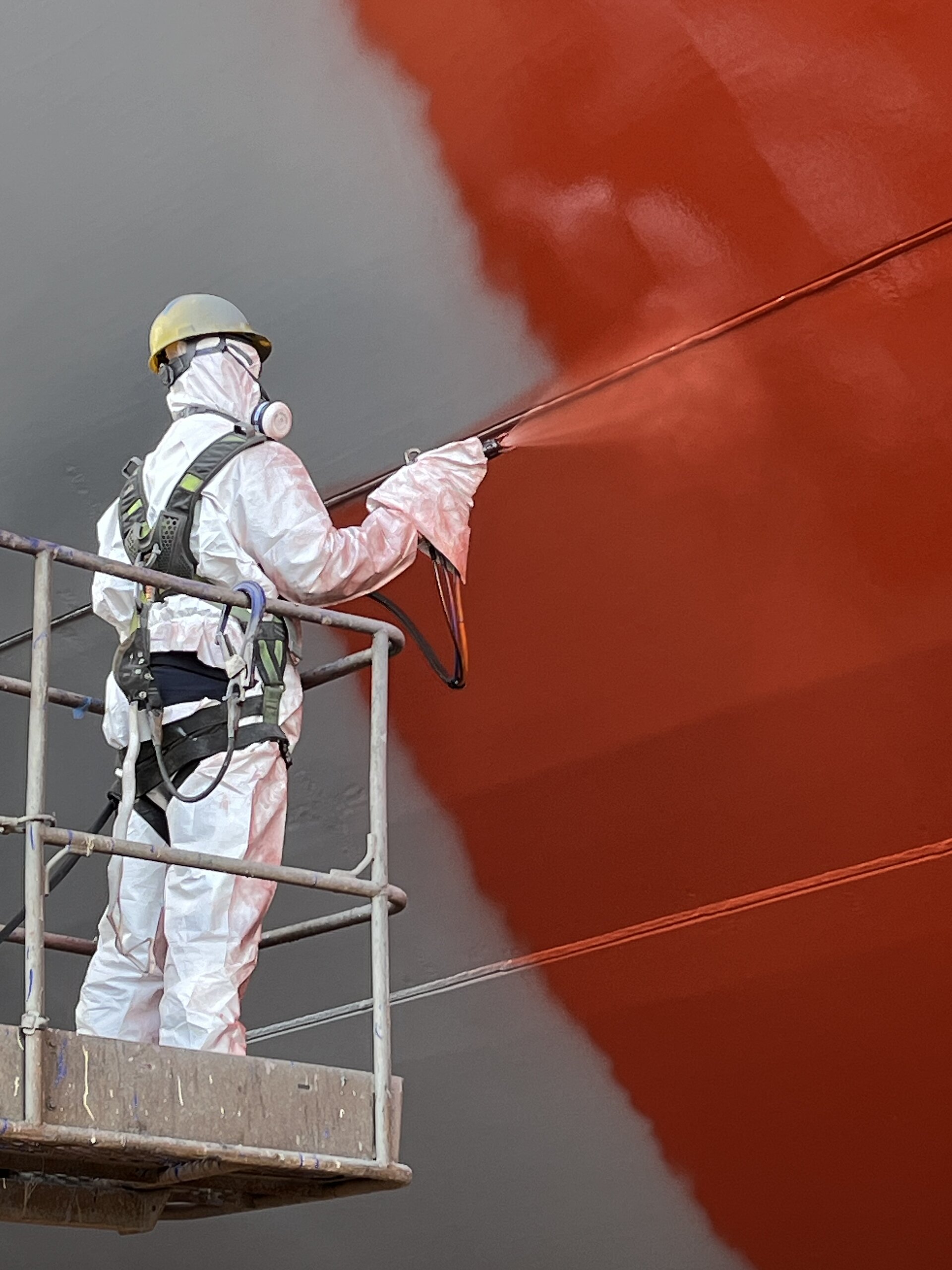
PPG: low-friction coatings are a key tool to meet GFI requirements

Electrostatic application of PPG Sigmaglide cuts overspray (Source: PPG)
US coatings company PPG has stressed the growing importance of low-friction coatings as global shipping faces the daunting prospect of complying with the IMO’s Greenhouse Gas Fuel Intensity (GFI) targets and emission reductions between now and mid-century.
The IMO’s draft mid-term measures, debated at the IMO’s recent MEPC meeting in London and likely to be adopted at the 2nd Extraordinary Session of the MEPC in October, have set GFI targets from 2028 that become steadily more demanding.
The ‘Base’ case envisages a reduction in GHG emissions from ships of at least 20% compared with 2008 levels by 2030, and 70% by 2040. A more ambitious ‘Direct Compliance’ pathway sets reduction targets of 30% by 2030 and 80% by 2040.
“For shipowners and operators, the ability to achieve savings of this magnitude requires radical improvements in design and operating efficiency, and selection of the right energy efficiency solutions is of utmost importance. It is this realisation that is prompting leading shipowners and operators to adopt low-friction coatings that can directly shift the speed-power curve, reducing fuel consumption and GHG emissions while improving operational efficiency,” explained Ariana Psomas, PPG global segment director, New Build and Dry Dock, Marine Coatings.
The company also highlighted the importance of electrostatic coating applications in repair yards. Applications of its high-performance fouling release coatings have achieved an overspray reduction of 40%.
